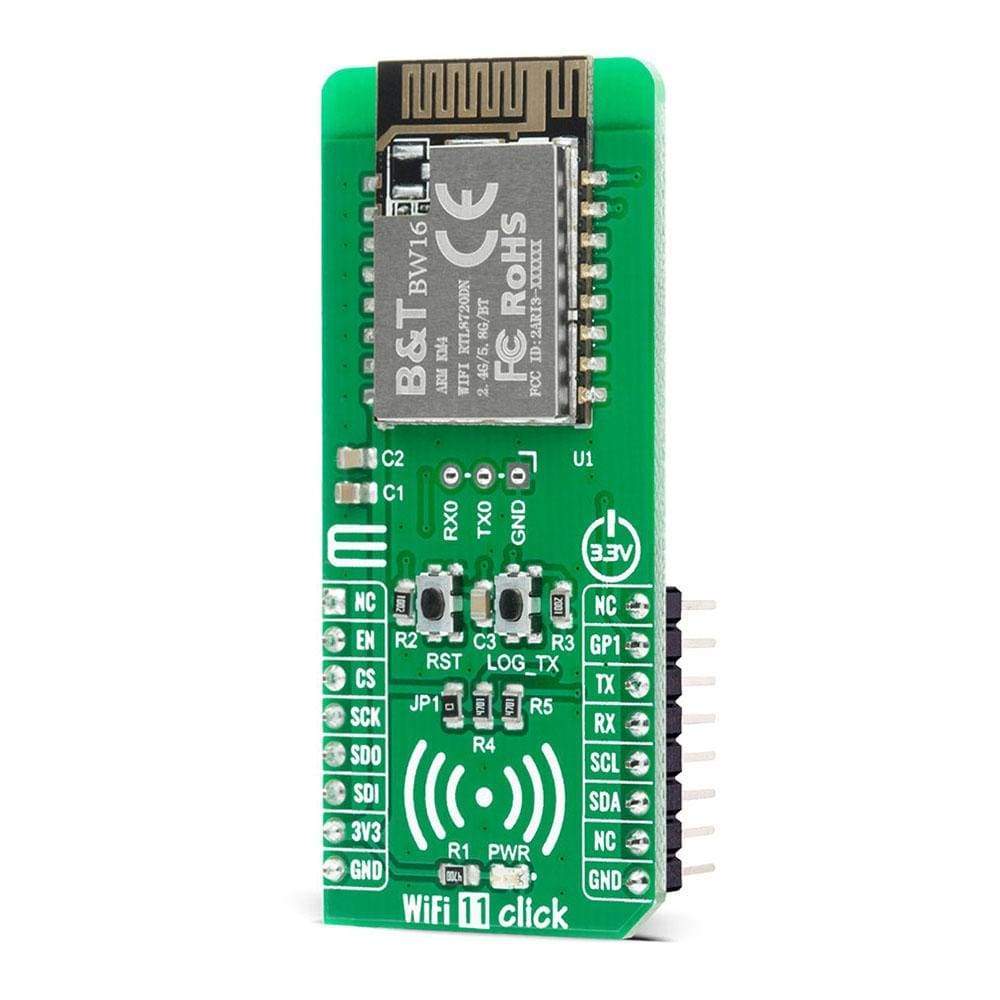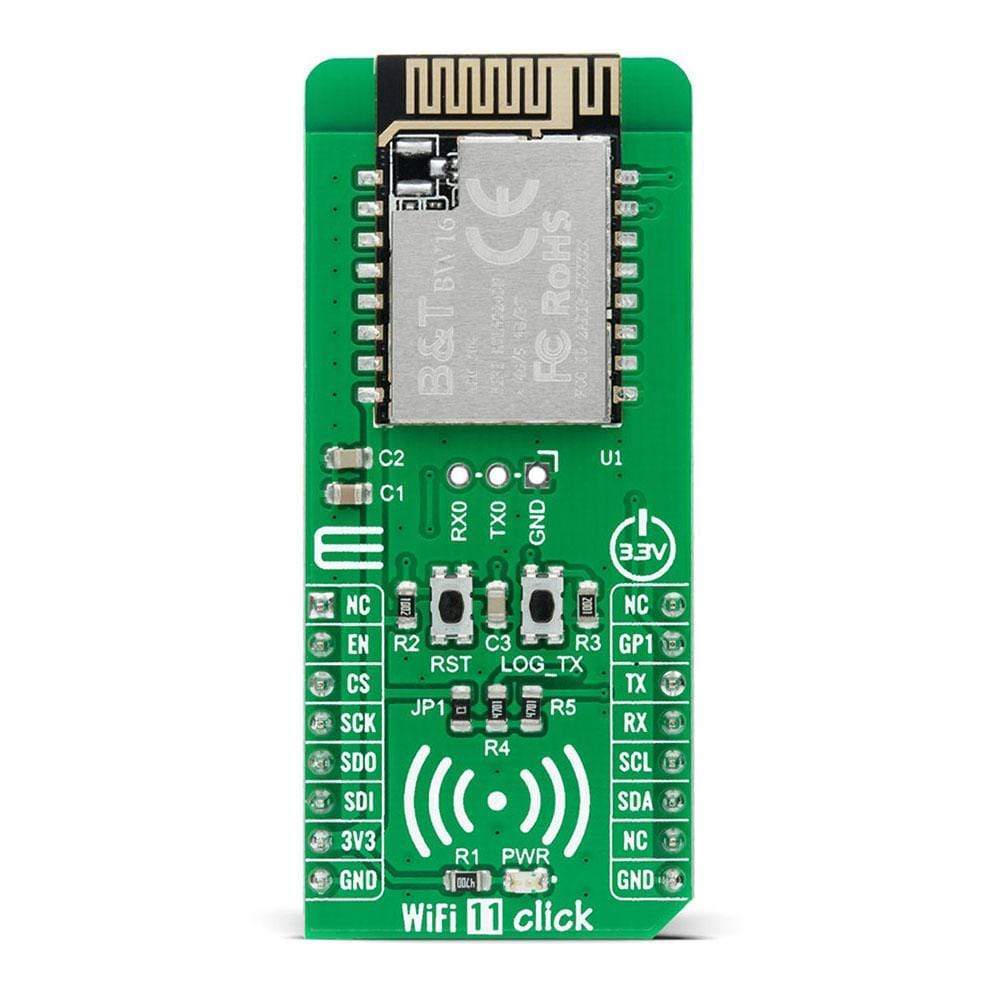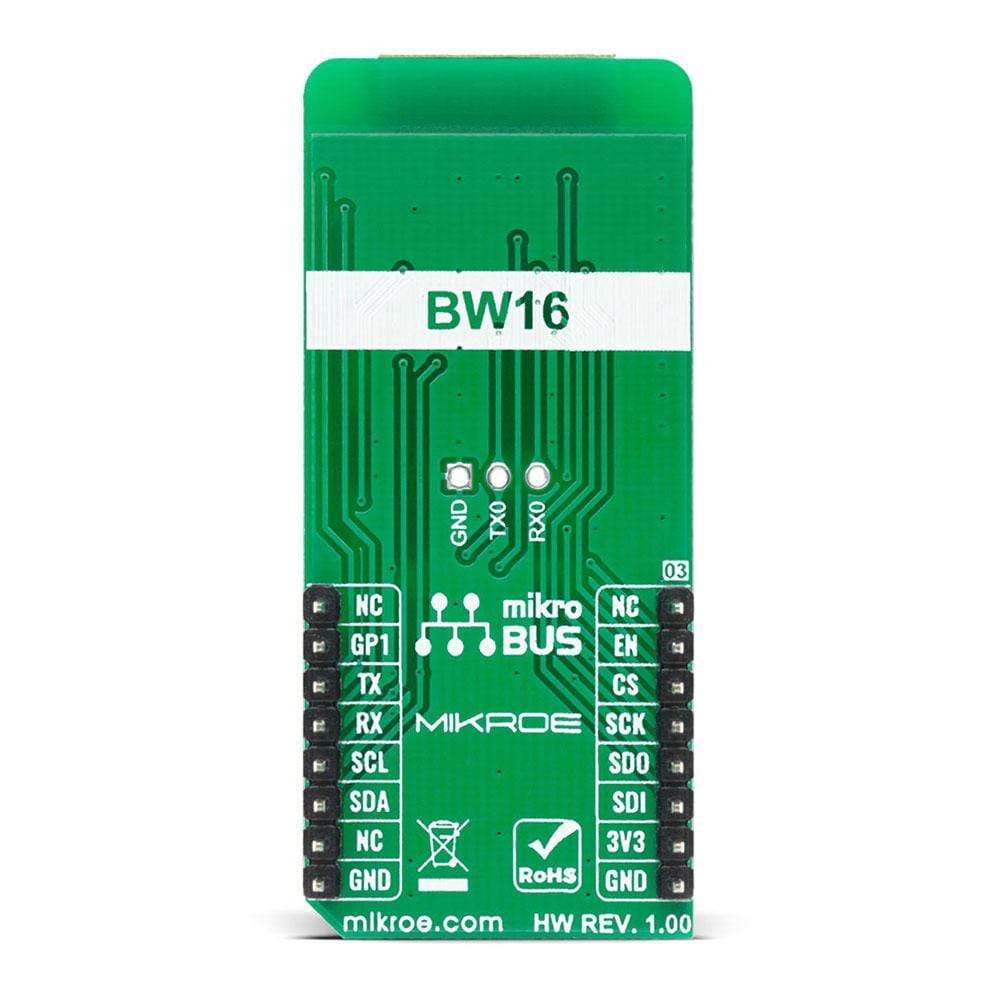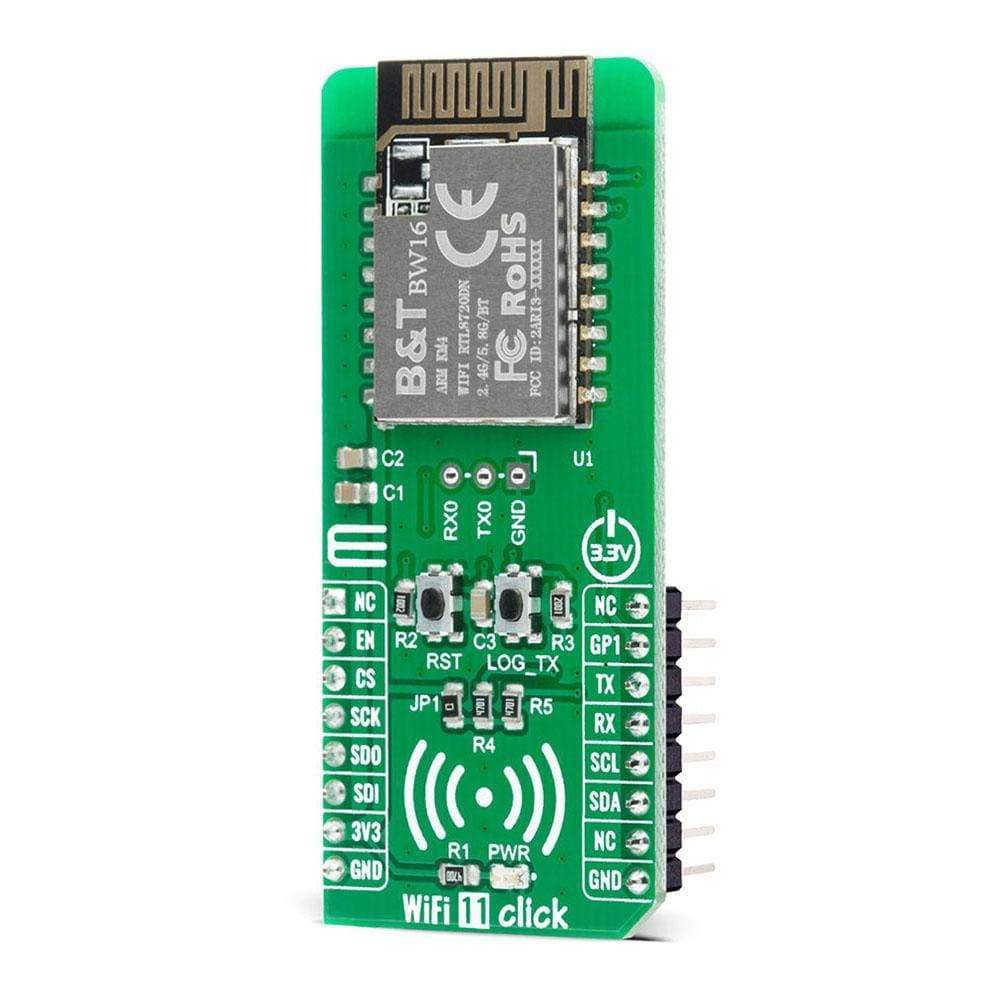
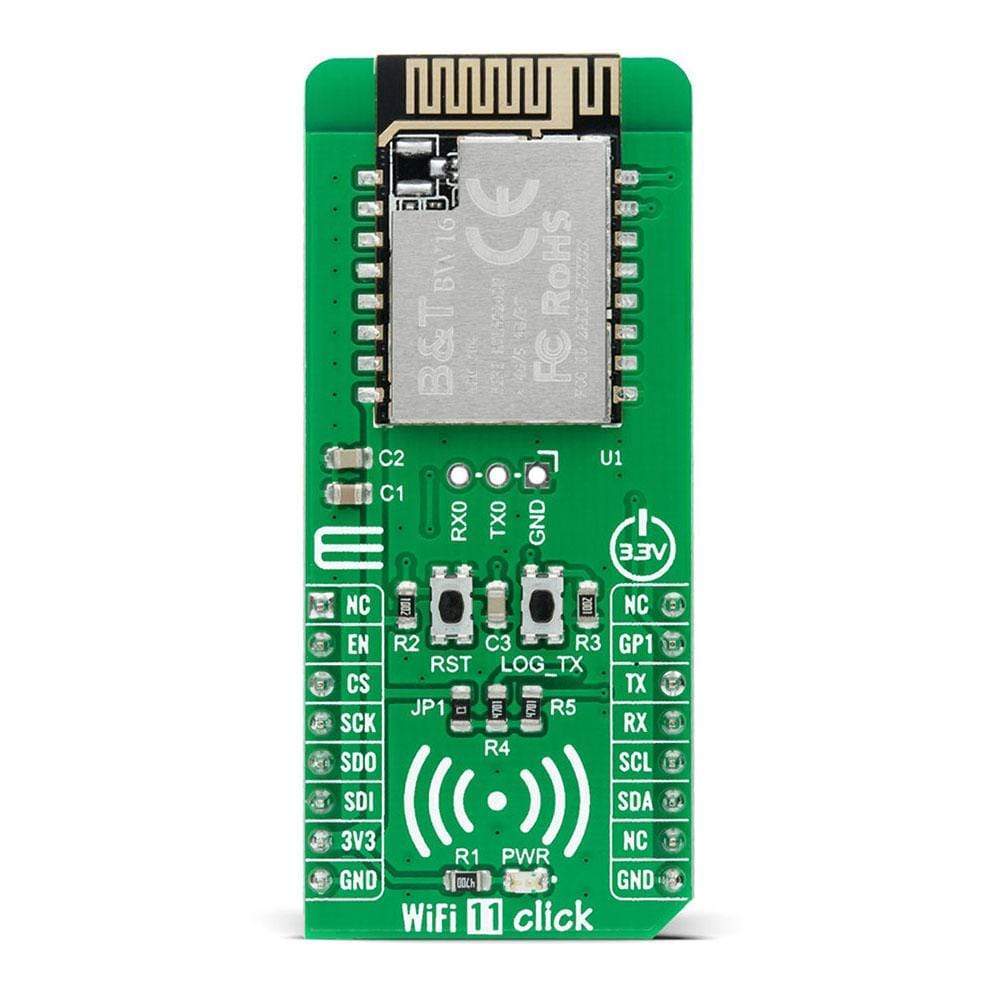
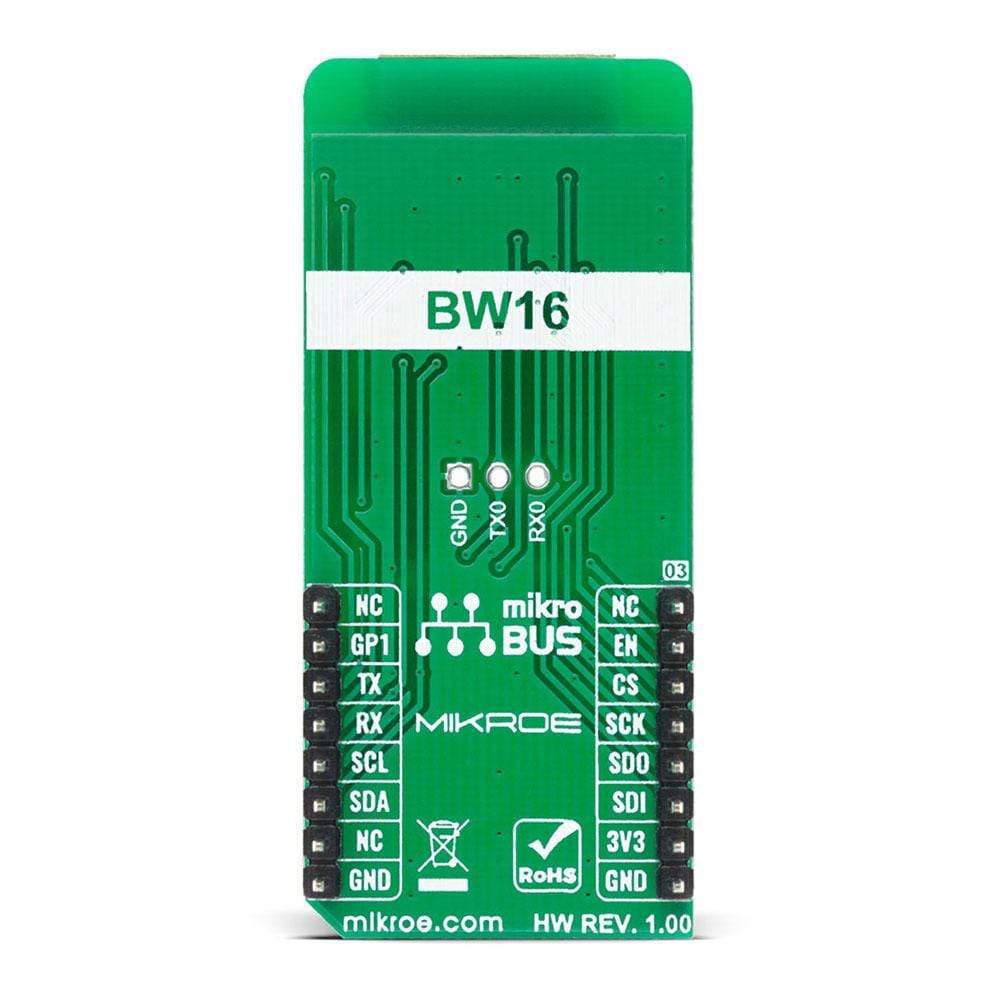
Overview
The WiFi 11 Click Board™ is a compact add-on board that contains a WiFi and Bluetooth module that has dual bands for WiFi communication. This board features the BW16, a low-power dual-band Wireless LAN (WLAN) and Bluetooth Low Energy SoC module from Shenzhen B&T Technologies Co., Ltd. This module supports the WiFi 5G and Bluetooth Low Energy 5.0, it consists of a high-performance MCU on a module named KM4, a low power MCU named KM0, WLAN (802.11 a/b/g/n) MAC, a 1T1R capable WLAN baseband, RF, Bluetooth, and peripherals. An inner antenna and many interfaces are available in this WiFi and Bluetooth module. This Click Board™ is suitable for industrial wireless control, Bluetooth gateway, security ID tags, smart home applications, and many more.
The WiFi 11 Click is supported by a mikroSDK compliant library, which includes functions that simplify software development. This Click Board™ comes as a fully tested product, ready to be used on a system equipped with the mikroBUS™ socket.
Downloads
Le WiFi 11 Click Board™ est une carte complémentaire compacte qui contient un module WiFi et Bluetooth doté de deux bandes pour la communication WiFi. Cette carte comprend le BW16, un module SoC Bluetooth Low Energy et LAN sans fil (WLAN) à double bande à faible consommation de Shenzhen B&T Technologies Co., Ltd. Ce module prend en charge le WiFi 5G et le Bluetooth Low Energy 5.0, il se compose d'un MCU hautes performances sur un module nommé KM4, d'un MCU basse consommation nommé KM0, d'un MAC WLAN (802.11 a/b/g/n), d'une bande de base WLAN compatible 1T1R, RF, Bluetooth et de périphériques. Une antenne interne et de nombreuses interfaces sont disponibles dans ce module WiFi et Bluetooth. Ce Click Board™ convient au contrôle sans fil industriel, à la passerelle Bluetooth, aux étiquettes d'identification de sécurité, aux applications de maison intelligente et bien d'autres.
Le Click WiFi 11 est pris en charge par une bibliothèque compatible mikroSDK, qui comprend des fonctions qui simplifient le développement logiciel. Ce Click Board™ est un produit entièrement testé, prêt à être utilisé sur un système équipé de la prise mikroBUS™.
| General Information | |
|---|---|
Part Number (SKU) |
MIKROE-4245
|
Manufacturer |
|
| Physical and Mechanical | |
Weight |
0.021 kg
|
| Other | |
Country of Origin |
|
HS Code Customs Tariff code
|
|
EAN |
8606027380495
|
Warranty |
|
Frequently Asked Questions
Have a Question?
Be the first to ask a question about this.

